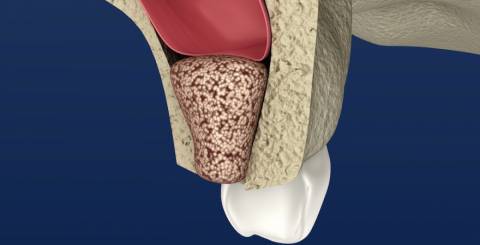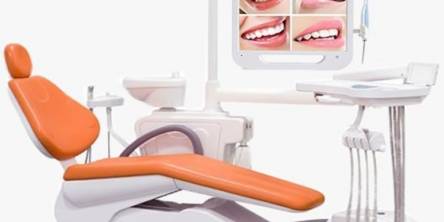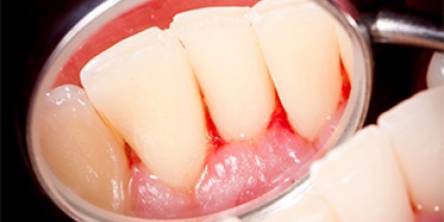What to Know About Sinus Lift

When you want dental implants but don't have enough jaw bone to secure the implant, your dentist may recommend sinus lift surgery.
This procedure is also known as sinus augmentation or sinus graft. This procedure can be performed by a variety of medical specialists, including periodontists and oral surgeons.
A dental specialist can perform sinus lift surgery using a variety of techniques. Continue reading to learn more about these methods and how they can help secure your dental implants.
Purpose of Sinus Lift
The augmentation or lifting up of the maxillary sinus to make more room for new bone is referred to as a sinus lift.
The maxillary sinuses are air-filled cavities located just above the back of the maxilla, or upper jaw. There is more bone for a dentist to place a dental implant by lifting the sinus and grafting bone in between.
If you don't have enough upper jaw bone, the implant won't be able to properly anchor, and your new dental implant won't be able to perform more demanding tasks like chewing.
Without sufficient bone, the dental implant will not be properly secured and may fail. Birth defects, cancer, natural variation, where your sinus cavities are very large or your jawbone is very thin, and periodontal disease is all possible causes of jaw bone loss.
During the Procedure
The following are some of the fundamental steps:
- To keep you comfortable during the procedure, you may be given oral or intravenous sedatives, or a dentist may numb the area with a local anesthetic.
- In order to expose the bone, your surgeon will identify and make incisions into the back portion of your gum tissue.
- Your surgeon will carefully cut a small area of bone while avoiding the sinus membranes.
- Your surgeon will raise the membrane by lifting the cut portion of bone into the sinus cavity.
- In the newly lifted area, your surgeon will place bone graft materials. This can be bone from another part of your body or artificial bone material. Before the procedure, you and your doctor will have discussed the best option for you.
- Sutures will be used by your surgeon to close the incisions in your gums.
Recovery
Swelling and bleeding are two of the most common side effects of a sinus lift. This discomfort usually lasts only a few days, and you can resume your normal activities as directed by your doctor.
The perforation of the Schneiderian membrane is the most common complication of sinus lift surgery. Perforation of this membrane, which lines the maxillary sinus cavity, increases the risk of chronic sinusitis and sinus infection.
Typically, you will return to your doctor within a week of the procedure. If your pain worsens rather than improves, or if your bleeding is difficult to control, contact your doctor as soon as possible.
Cost
The procedure may cost between $1,500 and $5,000. Prior to the procedure, your doctor should go over the expected costs with you.
If you have dental insurance, it may cover a portion of the procedure. To pay for the procedure, some people choose financing options such as payment plans with their dentist or financing through a medical financing company.
What to Expect
Before placing dental implants, your jawbone may need to heal and develop for 4 to 12 months. However, if you have sinus lift surgery, your doctor may decide to place dental implants right away.
After a successful sinus lift surgery, you usually do not need the procedure again. If your doctor perforates the Schneiderian membrane during the procedure, he or she may advise you to wait for the membrane to heal before repeating the sinus lift.
The Bottom Line
Sinus lift surgery can pave the way for the placement of dental implants. The outpatient procedure aids in the formation of a stronger bone anchor for a dental implant, increasing the likelihood that the implant or implants will be successful.
Before the implant procedure, your doctor should carefully evaluate your jawbone health and explain their sinus lift recommendations, approaches, and potential bone grafting materials.
Similar Articles
Learn 5 signs you may need dentures and discover the steps to get started for a healthier smile and improved quality of life.
Boost patient trust and diagnostic accuracy with high-quality intraoral cameras. Enhance care, improve communication, and streamline operations in your dental practice!
Imagine this: You just walked out of the dentist's office after your laser gum contouring procedure, and your smile is on the verge of greatness: no more gummy grins or uneven gum lines. You’re practically ready to hit the red carpet. But hold up — what happens next? How fast can you expect to heal after your gums get their laser makeover?
Have you ever wondered how orthodontic treatment has evolved over the years? Are you curious about the latest innovations in teeth straightening technology? Have you heard about Invisalign but aren't quite sure how it works or if it's right for you? If you've found yourself pondering these questions, you're not alone.
Gingivitis is an inflammation of the gums that often develops unnoticed in the early stages. However, if left untreated, it can lead to severe complications. In this article, we look at five essential facts about gingivitis that will help you better understand this disease and take the necessary steps to prevent and treat it.
Everyone is looking for that movie star smile but we think to ourselves that it’s going to cost too much money and so we give up on the dream. You would be surprised at what can be achieved at your local dental clinic and people have gone in through the doors and came out a short time later with an unbeatable smile that may be even better than the TV and movie stars that we see every single day
Dental implants fundamentally changed the concept of replacing teeth.
Cosmetic dentistry is a branch of dentistry that focuses on enhancing the function and appearance of a patient's smile. Cosmetic dentistry near you is frequently elective, but it can provide numerous restorative benefits. Depending on the type of cosmetic treatment you have, most are rather easy, while some are more difficult
Tooth pain is a common but frequently misunderstood condition that can have a substantial influence on one's quality of life. Tooth pain can occur for a variety of causes, ranging from minor, short-term sensitivity to severe, devastating pain.









